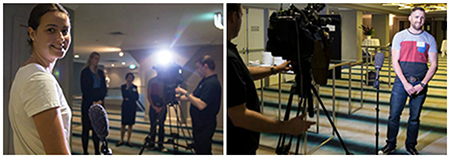More than 200 teachers from across Queensland converged in Brisbane recently, for the inaugural Queensland Numeracy Summit, hosted by Griffith’s School of Education and Professional Studies (EPS).
The Summit, held in June with the support of the Queensland College of Teachers (QCT) and the Queensland Deans of Education (QDE) Forum, aimed to equip teachers with skills to inspire positive and meaningful numeracy learning experiences in today’s classrooms.
Delegates from across the school, university and government sectors heard from inspiring keynote speakers and engaged in event polling throughout the day to identify issues and develop strategies, with media personality and science expert Adam Spencer facilitating the sessions.

Delegates engaged in group activities throughout the day to identify issues and develop strategies around numeracy education
EPS Dean Professor Donna Pendergast says the Summit provided the opportunity for a sharpened focus on numeracy learning and teaching, with a particular focus on Initial Teacher Education (ITE).
“The links and collaboration between our School, QCT, the QDEF and the full range of education stakeholders in Queensland and beyond was clearly evident on the day, and feedback extremely positive,” she says.
“Through the event polling delegates could exchange ideas and co-construct a shared philosophy and strategies for engaging pre-service students with numeracy, which they can now bring to their classrooms.
“Drawing upon prior learning experiences, encouraging positive attitudes towards mathematics, and developing children’s confidence and resilience were identified as key actions by the participants.”
Strategies discussed for numeracy learning and teaching in ITE included:
- Designing real life contexts in lectures, tutorials and ITE learning experiences
- Making explicit linkages between content in learning areas/subjects
- ITE students developing an appreciation that there can be more than one answer and more than one way of teaching numeracy
- Continued professional learning and development of a ‘feedback culture’

Danielle Nash (left) and Joel Anderson (right), two third year Griffith Bachelor of Primary Education students preparing to be interviewed by Channel 10 Studios. They came to the Summit to find out more about the most effective ways that numeracy can be taught in the classroom.
Professor Pendergast says developing action plans to progress this numeracy improvement agenda is the next phase, and will involve the QDE and QCT.
“There are important roles and actions needed by all stakeholders — Government, Higher Education Institutions, school systems, schools, teachers and ITE students — to positively enact this commitment,” she says.
To find out more about the event outcomes and future strategies that arose from the Summit, read the 2015 Numeracy Summit Communiqué.
View presentation slides and photos from the inaugural Numeracy Summit.
